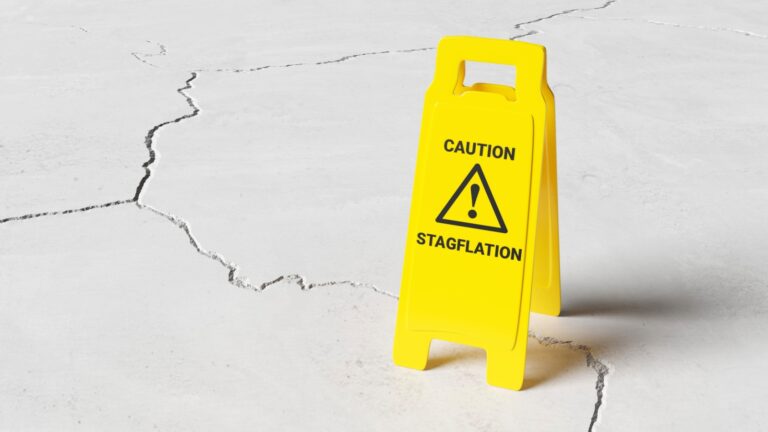Stagflation is an economic cycle defined by stagnant growth, rampant inflation and high unemployment. It’s a sort of worst-case scenario for a country due to the relative inability of modern economic tools to deal with all its symptoms at once.
Interestingly, stagflation was once considered to be an impossible outcome, due to its somewhat contradictory elements. Reasonably so, inflation typically goes hand-in-hand with both strong economic growth and low unemployment. However, both the U.S. and countries across the world have experienced bouts of stagflation, making it a very real threat to economic prosperity.
Stagflation is so devastating because it’s difficult to address any one of its symptoms without irritating one or both of the others. For example, when inflation is high, the central bank will typically respond by raising interest rates. This will serve to lower the aggregate demand in the country, reduce cash flow and, eventually, lower inflation
However, raising interest rates during stagflation may not just lower inflation — it will also exacerbate already-high unemployment and further slow economic growth, potentially making the situation worse than it already was. This is the major problem with stagflation.
What Causes Stagflation?
Stagflation remains a relatively mysterious phenomenon in economic theory. There are many theorized causes of stagflation, but they are heavily debated among economists due to the infrequency with which stagflation occurs. As such, this list is neither exhaustive, nor definitive.
- Supply shock. Should the aggregate supply of a country, or the supply of a major industry, decrease suddenly, prices will tend to rise substantially. This will hurt the profit for companies, and overall slow economic growth. Once again, there are plenty of examples of supply shocks that don’t propagate stagflation. Under the right circumstances, however, it could be a trigger.
- Monetary policy. Monetary theory can also play a big role in the creation of a stagflationary environment. During the 1970s, when the U.S. experienced its first and only major run-in with stagflation, the U.S. inadvertently caused stagflation via policies designed to achieve maximum employment. This resulted in a surge of inflation and effected both the employment level and economic growth.
- End of the gold standard. Some believe President Richard Nixon’s conversion of U.S. dollars off the gold standard contributed to stagflation in the 1970s. Indeed, the idea is that the end of the gold standard served to devalue the dollar, which indirectly caused inflation and slowed economic growth — thus creating an environment even more ripe for stagflation.
History of Stagflation
As mentioned, the most famous example of stagflation came in the 1970s and heavily effected the United States.
Most, but not all, attribute 1970s stagflation to an oil crisis created by the Organization of the Petroleum Exporting Countries (OPEC). Indeed, in 1973, OPEC declared an oil shipping embargo on the U.S. and Israel’s European allies “in response to Western support of Israel during the Yom Kippur War,” per Seeking Alpha.
As a result, oil prices surged by more than 300% — and stayed elevated even long after the end of the embargo in 1974 — causing devastation in the driver-heavy U.S. At the same time, the U.S. saw an export of many of its manufacturing jobs.
This is considered just the the initial trigger of stagflation, however, which would only become more pronounced due to failed macroeconomic policies, including efforts by Nixon to purposely devalue the dollar and institute price and wage freezes.
In the end, inflation was so high that it took two recessions for price growth to properly ease. It also forced the central bank to push the prime lending rate past 21% as a means of curbing growth, and thus, inflation. For context, the benchmark rate is considered to be at restrictive levels even now, at a comparatively meager 5.25% to 5.5%.
At the end of the day, economics is the study of people. During stagflation, the quality of life for individuals and families deteriorated substantially, and for quite some time.
Stagflation also challenged many long-held assumptions about the relationship between variables like unemployment and inflation as well as the order with which to tackle an imbalanced economy.
On the date of publication, Shrey Dua did not hold (either directly or indirectly) any positions in the securities mentioned in this article. The opinions expressed in this article are those of the writer, subject to the InvestorPlace.com Publishing Guidelines.

